Anoplura
Sucking Lice
Vince Smith and Emilie Bess- Haematopinidae
- Hybopthiridae
- Ratemiidae
- Linognathidae
- Microthoraciidae
- Echinophthiriidae Seal lice
- Neolinognathidae
- Hamophthiriidae
- Pedicinidae
- Pecaroecidae
- Pediculidae
- Pthiridae
- Polyplacidae (monophyly uncertain)
- Hoplopleuridae
- Enderleinellidae
Introduction
The sucking lice, Anoplura, are parasites of mammals. Of the approximately 500 species of sucking lice, about 2/3 are parasites of rodents. They feed exclusively on blood and heavy infestations can cause severe debilitation, anemia, and weakness of the host (Price and Graham 1997).
Characteristics
- 0.35 – 8 mm long.
- True solenophages (vessel feeders).
- Head usually conical, often pointed and lacking a tentorial structure.
- Cranial plates and sutures occasionally developed in nymphs but usually obliterated
- in the adult instar.
- Antennae short, filiform, three or usually five segmented.
- Sensilla present on the second and third flagellomere.
- Compound eyes absent or reduced.
- Mouthparts highly modified comprising three protrusible flexible stylets formed from the fused maxillae, normally withdrawn inside a haustella sac.
- When extruded these pierce the hosts skin to locate suitable blood vessels.
- Thorax usually small and completely fused bearing a single pair of spiracles.
- Legs often well developed with a modified tibia and one segmented tarsus that bears a single pretarsal claw.
- Abdomen comprises eight pregenital segments, although the most anterior pair are usually fused.
- The ninth visible segment bears the genital apparatus.
- Tergal and sternal plates across the abdomen may be present and are usually weakly sclerotized, although the paratergites are often well developed.
- Six, three, two or a single pair of spiracles borne on segments III-VIII.
- External genitalia usually well developed in both sexes.
References
Durden, L. A. and G. G. Musser (1992). "Sucking lice (Insecta, Anoplura) from indigenous Sulawesi rodents: A new species of Polypax from a montane shrew rat, and new information about Polypax wallacei and P. eropepli." American Museum Novitates 3052: 19 pp.
Durden, L. A. and G. G. Musser (1994). "The sucking lice (Insecta, Anoplura) of the world: A taxonomic checklist with records of mammalian hosts and geographic distributions." Bulletin of the British Museum of Natural History 218: 90 pp.
Haub, F. (1980). "Letter to the editors: Concerning "phylogenetic relationships of parasitic Psocodea and taxonomic position of the Anoplura" by K. C. Kim and H. W. Ludwig." Annals of the Entomological Society of America 73(1): 3-6.
Kim, K. C. (1975). "Ecological and morphological adaption of the sucking lice ,(Anoplura: Echinophthiriidae) on the northern fur seal." Rapp. P.-v. Réun. Cons. int. Explor. Mer. 169: 504-515.
Kim, K. C. and K. C. Emerson (1974). "Latagophthirus rauschi, new genus and new species (Anoplura: Echinophthiriidae) from the river otter (Carnivora: Mustelidae)." Journal of Medical Entomology 11(4): 442-446.
Kim, K. C. (1988). Evolutionary parallelism in Anoplura and eutherian mammals. Biosystematics of Haematophagous Insects. M. W. Service. Oxford, Clarendon Press. 37: 91-114.
Kim, K. C. and H. W. Ludwig (1978). "Phylogenetic relationships of Parasitic Psocodea and Taxonomic Position of the Anoplura." Annals of the America Entomological Society of 71(6): 910-922.
Kim, K. C., C. A. Repenning, et al. (1975). "Specific Antiquity of the sucking lice and evolution of the otariid seals." Rapp. P.-v. Réun. Cons int. Explor. Mer. 169: 544-549.
Mey, E. (1994). "Pedicinus-Formen (Insecta, Phthiraptera, Anoplura) seltener schlankaffen (Mammalia, Primates, Colobinae) aus Vietnam." Rudolstädter nat. hist. Schr. 6: 83-92.
Price, M. A. and O.H. Graham (1997). "Chewing and sucking lice as parasites of mammals and birds." US Department of Agriculture Technical Service Bulletin No. 1849, 309 pp.
Title Illustrations

| Scientific Name | Haematopinus eurysternus |
|---|---|
| Comments | Parasite of Bos taurus |
| Specimen Condition | Dead Specimen |
| Copyright | © 1996 Iowa State University''s Entomology Image Gallery |
| Scientific Name | Echinophthirius horridus |
|---|---|
| Sex | Female |
| Life Cycle Stage | adult |
| View | dorsal/ventral |
| Copyright | © The Pacific Coast Entomological Society, San Francisco |
About This Page
Emilie Bess

Illinois Natural History Survey, Champaign, Illinois, USA
Correspondence regarding this page should be directed to Emilie Bess at
Page copyright © 2009 and Emilie Bess
All Rights Reserved.
- First online 07 March 1997
- Content changed 14 April 2009
Citing this page:
Smith, Vince and Emilie Bess. 2009. Anoplura . Sucking Lice. Version 14 April 2009 (under construction). http://tolweb.org/Anoplura/13871/2009.04.14 in The Tree of Life Web Project, http://tolweb.org/




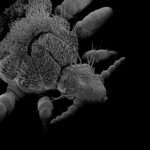
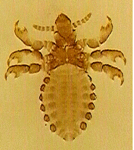
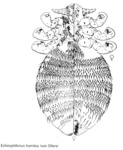
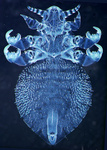
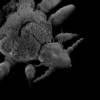





 Go to quick links
Go to quick search
Go to navigation for this section of the ToL site
Go to detailed links for the ToL site
Go to quick links
Go to quick search
Go to navigation for this section of the ToL site
Go to detailed links for the ToL site